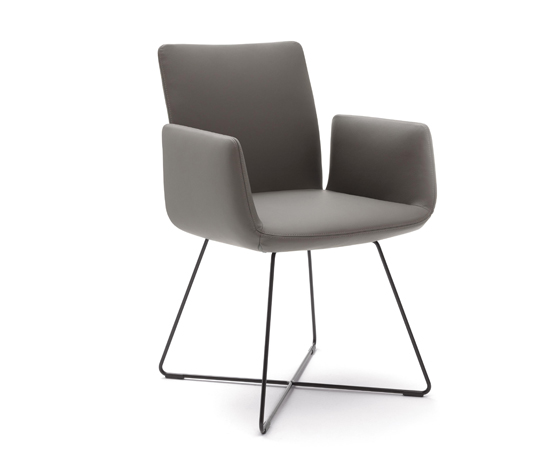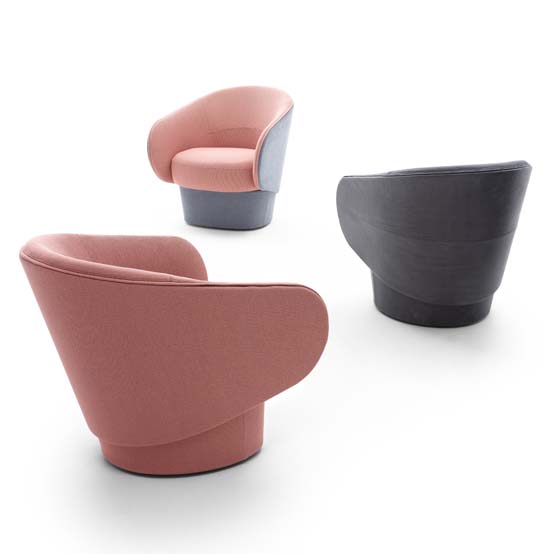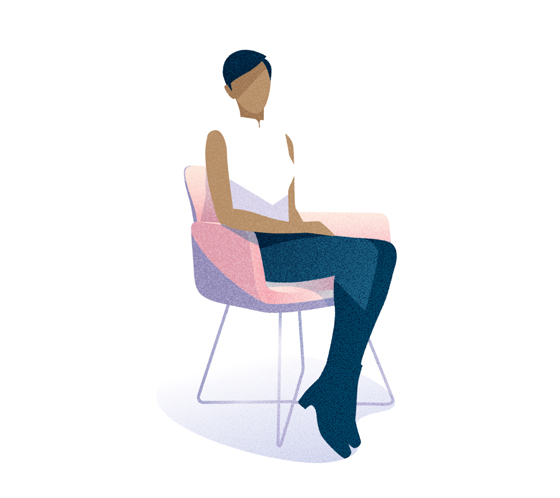Chest out, head high: the COR ways of sitting
Historia de la marca de Norman Kietzmann
Milano, Italia
19.06.18
When it comes to sitting, what type are you? And what does your sitting style say about you? Are you a self-engrossed sloucher, a boastful alpha male or, possibly, a fearful bunny? This sitting test will tell you.
Prof. Dr. Alfred Gebert analysed various sitting postures for Cor, such as the pseudo-casual shown here

Prof. Dr. Alfred Gebert analysed various sitting postures for Cor, such as the pseudo-casual shown here
×Body language is no small matter. It says a lot about us – especially when we are sitting. ‘Whether couch, lawn or armchair, every seating accommodation allows a range of different postures – and these reveal a great deal about our deeper mindset,’ explains psychologist Prof. Dr. Alfred Gebert. For the furniture producer Cor, based in Rheda-Wiedenbrück, Westphalia, Germany, he has analysed a number of sitting types which reflect both momentary emotional states as well as deep-seated character traits.
The pseudo-casual tries to remain calm, but tightly closed legs make for a rather insecure impression. A remedy is available in the comforts of the Mell Lounge sofa range from Jehs + Laub for Cor

The pseudo-casual tries to remain calm, but tightly closed legs make for a rather insecure impression. A remedy is available in the comforts of the Mell Lounge sofa range from Jehs + Laub for Cor
×The ‘pseudo casual’ category demonstrates the importance of nuance. People who are intent on making a casual impression often do just the opposite. ‘Your counterpart quickly senses that you want to appear easy-going but actually aren’t,’ Gebert says. ‘This is especially obvious when a person stands with their legs so close together that their knees touch – which can come across as uptight.’ Yet, he elaborates, this interpretation doesn’t fit every context. ‘It may be that that’s just how you sit down on the living room sofa. In that situation, the posture may simply convey relaxation. Because you want to relieve your neck muscles, for example.’
Sitting posture is especially important in one’s everyday working life. ‘Chest out, shoulders back, legs casually crossed or parallel with each other and head slightly tilted: many businesswomen sit this way,’ the psychologist says. What on the one hand may be read as a distinctive mark of a genteel and elegant person, can in some cases be interpreted as a tense or defensive posture – such as when the feet are tightly crossed at the ankles. Here, too, the nuances in body language can send out completely different signals.
The aristocrat sits upright with loosely crossed legs. The Jalis chair, designed for Cor by Stuttgart designer Jehs + Laub, reinforces an elegant appearance with its upholstered armrests

The aristocrat sits upright with loosely crossed legs. The Jalis chair, designed for Cor by Stuttgart designer Jehs + Laub, reinforces an elegant appearance with its upholstered armrests
×Hanging shoulders and a slumped posture project a lack of confidence. But sometimes this introverted position reflects exactly our frame of mind when sitting down in an armchair or on the couch after a long day of work. In this situation, we don’t want to communicate anything to others, but simply relax. We are at home, after all. Of special note, according to Gebert, is the fetal sitting posture, in which the knees are bent, with the arms embracing them: the ‘bunny’.
‘The sight of a person sitting this way triggers protective feelings in us,’ says the expert. ‘Paradoxically, many teenagers seem to think that this fetal position strikes other people as cool. Because it’s unconventional. And in fact, one would be more likely sit this way on the floor, not in an armchair.’ The body is bundled together, with the back curved and pulled away from the back of the chair or sofa. In this position, the ergonomic orientation of upholstered furniture doesn’t work anymore. While the seating surface and back of an armchair are designed so that we can casually fall into them, this requires that we open up, not tighten up, our posture. Thus bunnies may look cute, but they aren’t usually relaxed.
The bunny triggers feelings of protection with an embryonic sitting posture. But in this closed position, Cor's Roc chair remains unused. To make the most of its seating comfort, this Uwe Fischer-designed piece should be embraced with open arms

The bunny triggers feelings of protection with an embryonic sitting posture. But in this closed position, Cor's Roc chair remains unused. To make the most of its seating comfort, this Uwe Fischer-designed piece should be embraced with open arms
×A true expert when it comes to comfort is the ‘sprawler’. He stretches out in the armchair, puts up his feet and clasps his hands confidently behind his head. His body seems to outgrow its own dimensions, suddenly becoming one with a voluminous piece of furniture. Here, too, context is key. Struck in the office, this pose asserts an unlimited claim to power. Gebert sums up the message: ‘I rule the roost. I can do whatever I want here – even put my feet on the table.’ And the boss can do that – even if it doesn’t appear especially cultivated. If you aren’t the boss, this posture just makes you look silly.
The sprawler spreads with relish. Legs are raised and arms drape behind the head. The sofa Moss, a design by Jehs + Laub for Cor, provides plenty of room for limbs to splay in all directions

The sprawler spreads with relish. Legs are raised and arms drape behind the head. The sofa Moss, a design by Jehs + Laub for Cor, provides plenty of room for limbs to splay in all directions
×Dominance is decisive in the next category, too: the ‘dominant male’. To act out his role, he needs an ample armchair or sofa, whose backrest he embraces in his outstretched arms. ‘A person who sits this way doesn’t want to have anybody next to him, because he actually needs the space on the sofa all to himself,’ remarks the psychologist, who identifies a predilection for this posture especially in men holding, or contending for, executive positions. Particularly in today’s office life, however, this demeanour can quickly appear inappropriate. With the classic trappings of hierarchy being shelved one by one, those who truly have a say in a company can confidently forego such alpha male behaviour. He who nonetheless engages in it, wrapping his arms around every backrest he leans against, seems curiously out of step with the times.
The dominant male claims every inch of space. What a pity, because the angled sides of the Pilotis sofa, made by Milan design studio Metrica for Cor, are clearly designed for communication

The dominant male claims every inch of space. What a pity, because the angled sides of the Pilotis sofa, made by Milan design studio Metrica for Cor, are clearly designed for communication
ש Architonic













